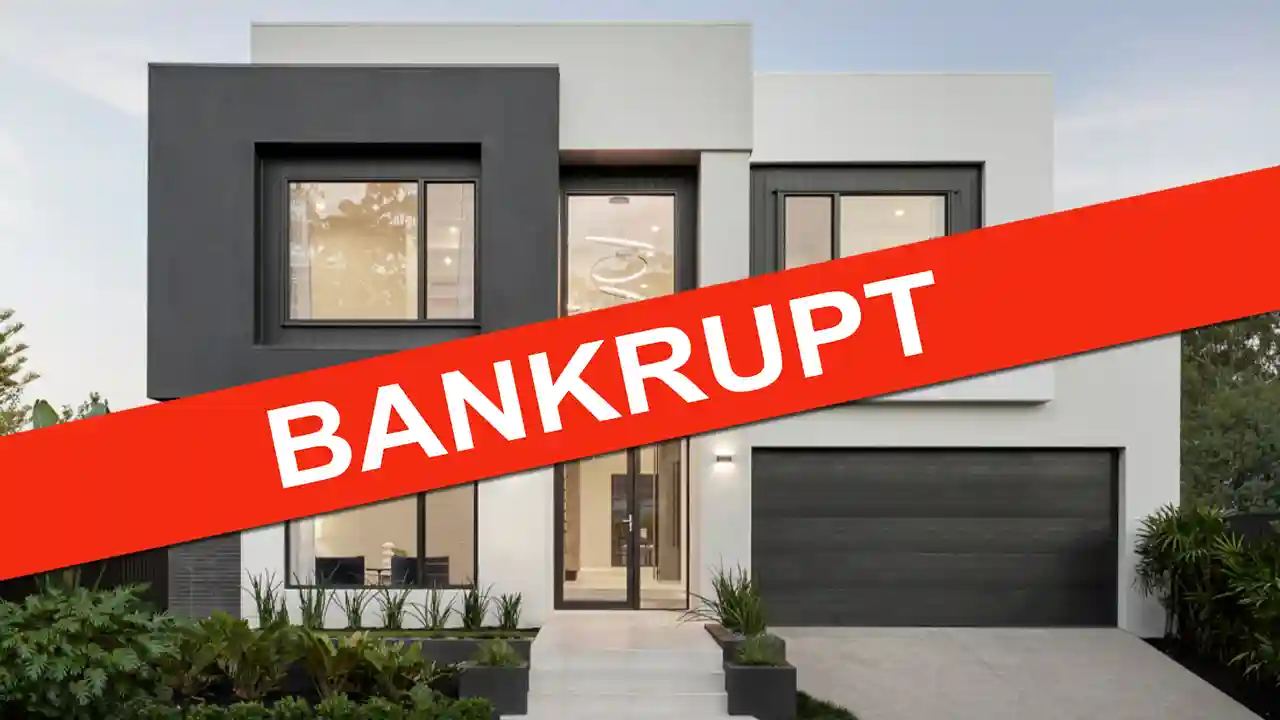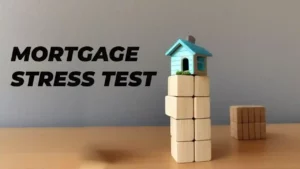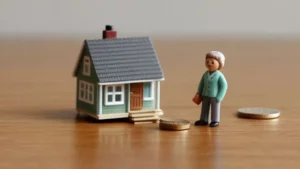Mortgagerateslocal.com – If you have filed for bankruptcy in the past, you might think that your chances of buying a home are ruined. However, that is not necessarily the case.
Depending on the type of bankruptcy you filed, the type of mortgage you want, and the steps you take to rebuild your credit, you may be able to qualify for a home loan sooner than you think. Do you wonder how long you have to wait before you can apply for a mortgage and start looking for your dream home?
We will show you that buying a home after bankruptcy is not impossible, but it does require some patience and preparation. We will explain how bankruptcy affects your ability to get a mortgage, how long you have to wait after bankruptcy to apply for a loan, and what you can do to improve your chances of getting approved.
By the end of this article, you will have a clear understanding of how to buy a home after bankruptcy and achieve your dream of homeownership. You will also learn some valuable tips and tricks that can help you save money, avoid scams, and find the best mortgage for your situation.
What is Bankruptcy and How Does it Affect Your Credit?
Bankruptcy is a legal process that allows you to eliminate or restructure your debts when you are unable to pay them. There are two main types of bankruptcy for individuals: Chapter 7 and Chapter 13.
Chapter 7 bankruptcy is also known as liquidation bankruptcy. It involves selling your non-exempt assets to pay off some of your debts, and then having the rest of your eligible debts discharged (wiped out). Chapter 7 bankruptcy typically takes three to six months to complete, and it stays on your credit report for 10 years.
Chapter 13 bankruptcy is also known as reorganization bankruptcy. It involves creating a repayment plan to pay back some or all of your debts over a period of three to five years, and then having the remaining eligible debts discharged. Chapter 13 bankruptcy typically takes three to five years to complete, and it stays on your credit report for seven years.
Both types of bankruptcy have a negative impact on your credit score and your credit history. They indicate that you have had serious financial difficulties and that you are a high-risk borrower. As a result, you may have trouble getting approved for new credit, or you may have to pay higher interest rates and fees.
How Long Do You Have to Wait After Bankruptcy to Get a Mortgage?
The answer to this question depends on several factors, such as the type of bankruptcy you filed, the type of mortgage you want, the lender you choose, and the cause of your bankruptcy. However, there are some general guidelines that you can follow to get an idea of how long you have to wait.
Conventional Loans
Conventional loans are mortgages that are not insured or guaranteed by the federal government. They are offered by private lenders, such as banks, credit unions, and mortgage companies. Conventional loans typically have stricter eligibility requirements than government-backed loans, such as higher credit scores and lower debt-to-income ratios.
According to the guidelines from Fannie Mae and Freddie Mac, the two major entities that buy and sell conventional loans, you have to wait at least four years after a Chapter 7 bankruptcy discharge or dismissal to apply for a conventional loan. You also have to wait at least two years after a Chapter 13 bankruptcy discharge, or four years after a Chapter 13 bankruptcy dismissal.
However, these waiting periods may be reduced if you can prove that your bankruptcy was caused by extenuating circumstances, such as a divorce, a medical emergency, or a natural disaster. In that case, you may be able to apply for a conventional loan after two years from a Chapter 7 bankruptcy discharge or dismissal, or after one year from a Chapter 13 bankruptcy discharge or dismissal.
FHA Loans
FHA loans are mortgages that are insured by the Federal Housing Administration, a branch of the Department of Housing and Urban Development. FHA loans are designed to help low- and moderate-income borrowers who may not qualify for conventional loans. FHA loans typically have more lenient eligibility requirements than conventional loans, such as lower credit scores and higher debt-to-income ratios.
According to the guidelines from the FHA, you have to wait at least two years after a Chapter 7 bankruptcy discharge to apply for an FHA loan. You also have to wait at least one year after a Chapter 13 bankruptcy discharge, or after you have made at least 12 months of on-time payments under your Chapter 13 repayment plan.
However, these waiting periods may be waived if you can prove that your bankruptcy was caused by extenuating circumstances, such as a death in the family, a serious illness, or a loss of income. In that case, you may be able to apply for an FHA loan after one year from a Chapter 7 bankruptcy discharge, or after you have made at least six months of on-time payments under your Chapter 13 repayment plan.
VA Loans
VA loans are mortgages that are guaranteed by the Department of Veterans Affairs. VA loans are available to eligible veterans, active-duty service members, reservists, National Guard members, and surviving spouses. VA loans typically have more generous eligibility requirements than conventional loans, such as no minimum credit score and no down payment.
According to the guidelines from the VA, you have to wait at least two years after a Chapter 7 bankruptcy discharge or dismissal to apply for a VA loan. You also have to wait at least one year after a Chapter 13 bankruptcy discharge, or after you have made at least 12 months of on-time payments under your Chapter 13 repayment plan.
However, these waiting periods may be shortened if you can prove that your bankruptcy was caused by extenuating circumstances, such as a job loss, a disability, or a relocation. In that case, you may be able to apply for a VA loan after one year from a Chapter 7 bankruptcy discharge or dismissal, or after you have made at least six months of on-time payments under your Chapter 13 repayment plan.
USDA Loans
USDA loans are mortgages that are guaranteed by the Department of Agriculture. USDA loans are available to eligible rural and suburban homebuyers who have low to moderate incomes and cannot obtain conventional financing. USDA loans typically have more flexible eligibility requirements than conventional loans, such as no minimum credit score and no down payment.
According to the guidelines from the USDA, you have to wait at least three years after a Chapter 7 bankruptcy discharge or dismissal to apply for a USDA loan. You also have to wait at least one year after a Chapter 13 bankruptcy discharge, or after you have made at least 12 months of on-time payments under your Chapter 13 repayment plan.
However, these waiting periods may be reduced if you can prove that your bankruptcy was caused by extenuating circumstances, such as a medical hardship, a divorce, or a loss of employment. In that case, you may be able to apply for a USDA loan after one year from a Chapter 7 bankruptcy discharge or dismissal, or after you have made at least six months of on-time payments under your Chapter 13 repayment plan.
How Can You Improve Your Chances of Getting a Mortgage After Bankruptcy?
As you can see, getting a mortgage after bankruptcy is not impossible, but it does require some patience and preparation. Here are some tips that can help you improve your chances of getting approved for a home loan after bankruptcy:
- Rebuild your credit. One of the most important factors that lenders consider when evaluating your mortgage application is your credit score. Your credit score reflects your credit history, which includes your payment history, your credit utilization, your credit mix, and your credit inquiries. Bankruptcy can lower your credit score significantly, but you can improve it over time by taking positive actions, such as:
- Paying your bills on time and in full every month
- Keeping your credit card balances low and paying them off every month
- Avoiding applying for new credit unless necessary
- Checking your credit reports regularly and disputing any errors
- Using a secured credit card or a credit-builder loan to establish a positive payment history
- Save for a down payment. Another important factor that lenders consider when evaluating your mortgage application is your down payment. Your down payment is the amount of money that you pay upfront for the home, and it affects your loan-to-value ratio, which is the percentage of the home’s value that you borrow. A higher down payment can lower your loan-to-value ratio, which can make you more attractive to lenders, as it shows that you have more skin in the game and that you are less likely to default on your loan. A higher down payment can also lower your monthly mortgage payment, which can make it easier for you to afford your loan and avoid late payments. Ideally, you should aim to save at least 20% of the home’s price as a down payment, as this can also help you avoid paying private mortgage insurance, which is an extra fee that lenders charge to protect themselves in case you default on your loan.
- Write a letter of explanation. Another helpful thing that you can do to improve your chances of getting a mortgage after bankruptcy is to write a letter of explanation. A letter of explanation is a document that you attach to your mortgage application that explains the circumstances that led to your bankruptcy and the steps that you have taken to improve your financial situation since then. A letter of explanation can help you show lenders that your bankruptcy was an isolated event that was beyond your control, and that you have learned from your mistakes and are now a responsible and reliable borrower. A letter of explanation should be concise, honest, and factual, and it should include:
- The date and type of your bankruptcy
- The cause of your bankruptcy, such as a medical emergency, a divorce, or a job loss
- The actions that you have taken to resolve your debts and rebuild your credit
- The reasons why you want to buy a home and why you are confident that you can afford it
- Any supporting documents that can verify your claims, such as medical bills, divorce papers, or pay stubs
- Shop around for the best deal. Finally, one of the most effective ways to improve your chances of getting a mortgage after bankruptcy is to shop around for the best deal. Different lenders have different criteria, rates, fees, and programs for borrowers who have filed for bankruptcy. Therefore, it is wise to compare multiple offers from various lenders and choose the one that suits your needs and budget the best. You can use online tools, such as mortgage calculators, to estimate how much you can afford to borrow and how much you will pay in interest and fees. You can also use online platforms, such as Bing, to search for and compare different mortgage options and lenders. By shopping around, you can save money, avoid scams, and find the best mortgage for your situation.
Conclusion
Buying a home after bankruptcy is not impossible, but it does require some patience and preparation. You have to wait for a certain period of time after your bankruptcy discharge or dismissal before you can apply for a mortgage, depending on the type of bankruptcy you filed and the type of mortgage you want.
You also have to rebuild your credit, save for a down payment, write a letter of explanation, and shop around for the best deal. By following these tips, you can improve your chances of getting approved for a home loan after bankruptcy and achieve your dream of homeownership.




